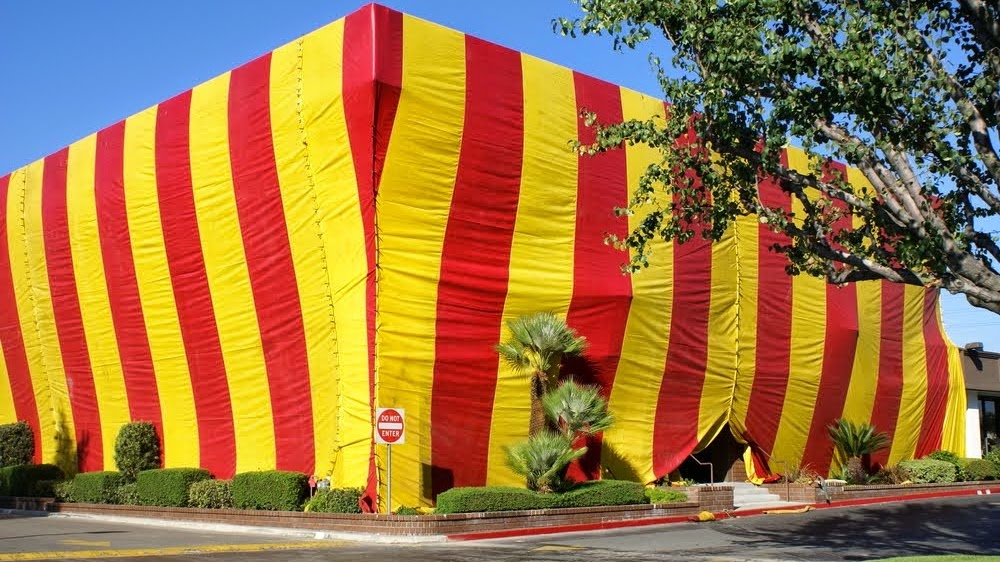Fumigation is a method of pest control that completely fills an area with gaseous pesticides--or fumigants--to suffocate or poison the pests within. It is used to control pests in buildings (structural fumigation), soil, grain, and produce, and is also used during processing of goods to be imported or exported to prevent transfer of exotic organisms. This method also affects the structure itself, affecting pests that inhabit the physical structure, such as woodborers and drywood termites.
Process
Fumigation generally involves the following phases: First the area intended to be fumigated is usually covered to create a sealed environment; next the fumigant is released into the space to be fumigated; then, the space is held for a set period while the fumigant gas percolates through the space and acts on and kills any infestation in the product, next the space is ventilated so that the poisonous gases are allowed to escape from the space, and render it safe for humans to enter. If successful, the fumigated area is now safe and pest free.
Tent fumigation (tenting)
Structural fumigation techniques differ from building to building, but in houses a rubber tent is often placed over the entire house while the pesticides are being released into the vacant residence. This process is called tent fumigation or "tenting". The sealed tent concentrates the poisonous gases and prevents them from escaping into the neighborhood. The process can take up to a week depending on the fumigant used, which in turn depend on the severity of infestation and size of the building.
Chemicals
Methyl bromide was among the most widely used fumigants until its production and use was restricted by the Montreal Protocol due to its role in ozone depletion.
Widely used fumigants include:
- phosphine
- 1,3-dichloropropene
- chloropicrin
- methyl isocyanate
- hydrogen cyanide
- sulfuryl fluoride
- formaldehyde
- iodoform
Safety
Fumigation is a hazardous operation. Generally it is a legal requirement that the operator who carries out the fumigation operation holds official certification to perform the fumigation as the chemicals used are toxic to most forms of life, including humans.
Post operation ventilation of the area is a critical safety aspect of fumigation. It is important to distinguish between the pack or source of the fumigant gas and the environment which has been fumigated. While the fumigant pack may be safe and spent, the space will still hold the fumigant gas until it has been ventilated.
See also
- ISPM 15
Early publication
- W. G. Johnson, Fumigation Methods (New York, 1902)
References
External links
- National Pesticide Information Center
- Termite Treatments - National Pesticide Information Center
Interesting Informations
Looking products related to this topic, find out at Amazon.com
Source of the article : here


EmoticonEmoticon